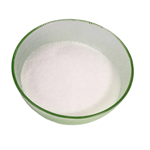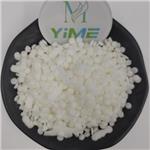- 1-Hexadecanol
-

- $15.00 / 1kg
-
2024-04-29
- CAS:36653-82-4
- Min. Order: 10kg
- Purity: 99%
- Supply Ability: 300tons
- cetyl alcohol
-

- $3.00 / 1000KG
-
2024-04-28
- CAS:36653-82-4
- Min. Order: 1000KG
- Purity: 99%
- Supply Ability: 1000kg/day
- 1-Hexadecanol
-

- $3.00 / 1000kg
-
2024-04-28
- CAS:36653-82-4
- Min. Order: 1000kg
- Purity: 99
- Supply Ability: 10000kg/day
|
| | 1-Hexadecanol Basic information |
| | 1-Hexadecanol Chemical Properties |
| Melting point | 48-50 °C (lit.) | | Boiling point | 179-181 °C/10 mmHg (lit.) | | density | 0.818 g/mL at 25 °C (lit.) | | vapor density | 8.34 (vs air) | | vapor pressure | <0.01 mm Hg ( 43 °C) | | refractive index | nD79 1.4283 | | FEMA | 2554 | 1-HEXADECANOL | | Fp | 275 °F | | storage temp. | Store below +30°C. | | solubility | Soluble in alcohol, chloroform, ether | | form | Powder, Flakes or Pellets | | pka | 15.20±0.10(Predicted) | | color | White to off-white | | Odor | at 100.00 %. waxy clean greasy floral oily | | Odor Type | waxy | | explosive limit | 8% | | Water Solubility | insoluble | | Merck | 14,2028 | | JECFA Number | 114 | | BRN | 1748475 | | Dielectric constant | 3.6(60℃) | | Stability: | Stable. Incompatible with strong oxidizing agents, strong acids. | | LogP | 6.7 | | CAS DataBase Reference | 36653-82-4(CAS DataBase Reference) | | NIST Chemistry Reference | 1-Hexadecanol(36653-82-4) | | EPA Substance Registry System | 1-Hexadecanol (36653-82-4) |
| | 1-Hexadecanol Usage And Synthesis |
| Description | 1-Hexadecanol is a waxy white powder or flake form at room temperature, and is insoluble in water and soluble in alcohols and oils. Discovered by Chevrenl in 1913, It is one of the oldest known long-chain alcohol. It can be produced from the reduction of palmitic acid. 1-Hexadecanol may be contained in cosmetic and personal care products such as shampoos, creams and lotions. it is mainly used as an opacifier, emulsifier, and thickening agent that alter the thickness of the liquid, and increase and stabilize the foaming capacity. | | Chemical Properties | Cetyl alcohol occurs as waxy, white flakes, granules, cubes, or
castings. It has a faint characteristic odor and bland taste. | | Originator | Hexadecyl alcohol,Esso Res. And
Eng. Co. | | Occurrence | Reported as a major constituent of spermaceti oil, where it is present chiefy as cetyl palmitate Also reported found in guava, peach, pear, kohlrabi, baked potato, mustard, Parmesan cheese, butter, milk powder, boiled egg, cooked chicken, roasted beef, beef fat, whiskies, tea, starfruit, mango, rice, licorice, kiwifruit, loquat, endive, shrimp, crab, clam, Cape gooseberry and pawpaw | | Uses | cetyl alcohol is a versatile ingredient that can serve as an emollient, emulsifier, thickener, binder, foam booster, or emulsion stabilizer, depending on the formulation and need. It is derived from coconut or palm oil as well as being synthetically manufactured. It is considered by some sources to be a non-comedogenic material. | | Uses | 1-Hexadecanol has been used in preparation of:
(±)-2-methoxyheptadecanoic acid (fatty acid)
high-chain fatty acid esters of 1-hexadecanol, novel organic phase change material for thermal energy storage
hexadecane (alkane) in the presence of membrane fraction of Vibrio furnissii M1 | | Definition | ChEBI: 1-Hexadecanol is a long chain fatty alcohol that is hexadecane substituted by a hydroxy group at position 1. It is a synthetic, solid, fatty alcohol and nonionic surfactant. It is used as an emulsifying agent in pharmaceutical preparations. | | Production Methods | Cetyl alcohol may be manufactured by a number of methods such as
esterification and hydrogenolysis of fatty acids or by catalytic
hydrogenation of the triglycerides obtained from coconut oil or
tallow. Cetyl alcohol may be purified by crystallization and
distillation. | | Therapeutic Function | Pharmaceutic aid | | Synthesis Reference(s) | The Journal of Organic Chemistry, 42, p. 512, 1977 DOI: 10.1021/jo00423a025
Synthetic Communications, 25, p. 1901, 1995 DOI: 10.1080/00397919508015865
Tetrahedron Letters, 24, p. 4485, 1983 DOI: 10.1016/S0040-4039(00)85933-X | | General Description | 1-Hexadecanol is a free fatty acid alcohol generally used as an emulsifier, emollient, opacifier and surfactant in cosmetics formulations. | | Flammability and Explosibility | Not classified | | Safety | Cetyl alcohol is mainly used in topical formulations, although it has
also been used in oral and rectal preparations.
Cetyl alcohol has been associated with allergic delayed-type
hypersensitivity reactions in patients with stasis dermatitis. Crosssensitization
with cetostearyl alcohol, lanolin, and stearyl alcohol
has also been reported. It has been suggested that hypersensitivity
may be caused by impurities in commercial grades of cetyl
alcohol since highly refined cetyl alcohol (99.5%) has not been
associated with hypersensitivity reactions.
LD50 (mouse, IP): 1.6 g/kg
LD50 (mouse, oral): 3.2 g/kg
LD50 (rat, IP): 1.6 g/kg
LD50 (rat, oral): 5 g/kg | | storage | Cetyl alcohol is stable in the presence of acids, alkalis, light, and air;
it does not become rancid. It should be stored in a well-closed
container in a cool, dry place. | | Purification Methods | Crystallise the alcohol from aqueous EtOH or from cyclohexane. Alternatively purify it by zone refining. The purity can be checked by gas chromatography. [Beilstein 1 H 429, 1 I 219, 1 II 466, 1 III 1815, 1 IV 1876.] | | Incompatibilities | Incompatible with strong oxidizing agents. Cetyl alcohol is
responsible for lowering the melting point of ibuprofen, which
results in sticking tendencies during the process of film coating
ibuprofen crystals. | | Regulatory Status | Included in the FDA Inactive Ingredients Database (ophthalmic
preparations, oral capsules and tablets, otic and rectal preparations,
topical aerosols, creams, emulsions, ointments and solutions, and
vaginal preparations). Included in nonparenteral medicines licensed
in the UK. Included in the Canadian List of Acceptable Nonmedicinal
Ingredients. |
| | 1-Hexadecanol Preparation Products And Raw materials |
|